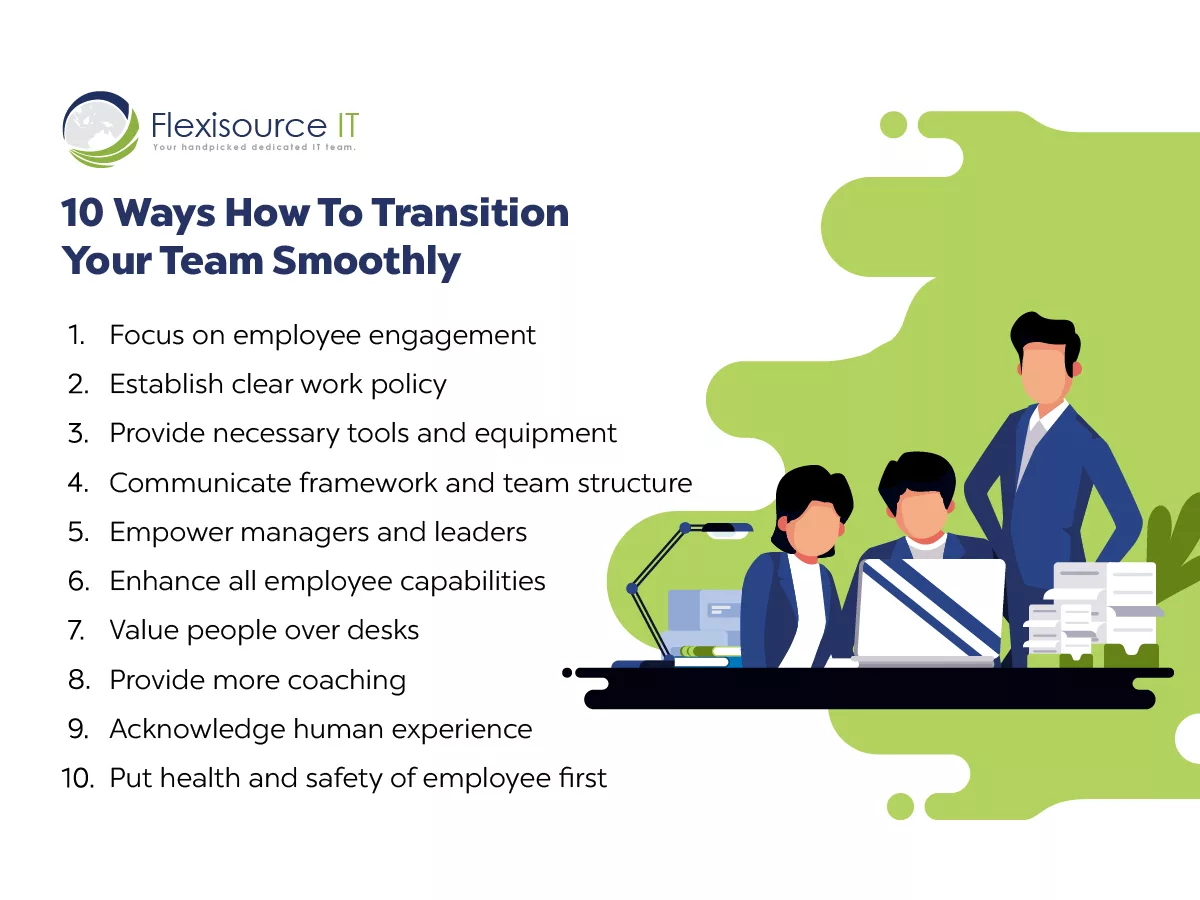We thought remote is the new normal, right? Well, for most companies, it is. Big companies such as Facebook, Twitter, Airbnb, and Slack have allowed their employees to work from home or anywhere they want permanently. But this is not the case for everyone. There are companies like IT-BPO in the Philippines. They are required by the government to return to the office or adapt a hybrid work setup.
And while most employees prefer working remotely vs. a hybrid setup, they don’t really have much choice. The best that their company can do is make sure that the transition is as smooth as possible. Preparation is the key.
So if you are one of those companies required to transition to a hybrid work setup, here are 10 tips to help your employees adapt to the hybrid work environment.
Challenges Of Transitioning to Hybrid Setup from Remote
We all know that hybrid work benefits employees and employers, such as cost-effectiveness, increased productivity, and more. However, not everyone in the team can receive these advantages. Hybrid work can be a huge adjustment, especially for those who live away from the office or are used to working remotely. You should look out for some pitfalls when transitioning to a hybrid setup.
- Confusion about the official rules. Since the pandemic, many companies have changed their practices and policies to adapt to remote working. Policies like work hours, breaks, or communications might need to be changed back to something that will address the office setting.
- Productivity gap and issues. Many companies benefitted from the increased productivity of workers when they started working remotely. In fact, it is believed that those who work remotely are 47% more productive than those who are working onsite. Thus, companies need to expect lower production at the start of hybrid work as most workers are still adjusting to this new setup.
- Low morale and poor work-life balance. Since working remotely, a lot of employees have a proper work-life balance. They were able to spend more time with their family and got in touch with their passions. A hybrid setup will more likely lose time to these things, causing low morale or disengagement.
- FOMO and team desynchronization. Some employees who are still working remotely or on different schedules might feel left out of the loop with the others.
10 Ways How to Transition Your Team Smoothly
These are just a few pitfalls when transitioning from remote to a hybrid setup. Now, let’s dig into strategies to transition your team members smoothly to a hybrid work setup.

1. Focus on employee engagement
Keeping remote employees engaged is a difficult task. But in time, companies were able to adapt to these settings and successfully engage with their employees via different methods like virtual events, games, etc.
However, transitioning to hybrid work can prove new challenges to employee engagement. Due to the hybrid work setup, companies need to focus on employee engagement initiatives with low morale.
Many things can be done to ensure that employees are happy with their work. One way is by giving them more autonomy over their work schedule and allowing them to decide when they want to work or take a break. This is especially important for people who have children because they will be able to spend more time at home with their families.
Another way is by ensuring that the project leaders are not developing biases between those who are working hybrid and remote. Since that working hybrid is more likely to meet face-to-face, managers might develop biases towards those who don’t go to the office. This could affect their engagement or relationship, and remote employees will feel neglected.
2. Establish a clear work policy
As mentioned earlier, transitioning to hybrid work can cause confusion to employees, particularly with the company policy and rules. Companies need to set up a clear work policy for their hybrid setup. This will help them in determining the allocation of resources and manpower. It will also help them decide how much time they need to allocate for each department.
3. Provide necessary tools and equipment
Companies need to provide the essential tools and equipment to help employees transition to a hybrid setup. This is a significant change for both the company and the employees.
The first thing that companies need to invest in is their physical space. They need to ensure they have enough room for everyone to work together in person. Management also needs to have enough workspace so that people can be productive when they are working remotely.
Some companies might also want to invest in a virtual meeting system so that people can still collaborate and communicate with those who are still working remotely.
4. Communicate framework and team structure
Establishing a policy is one thing. But communicating it to your team is another. If not appropriately displayed, new approaches can cause chaos to the team. It can happen disentanglement or confuse employees, resulting in unproductiveness.
As such, companies need to communicate the new framework for hybrid work setup to the team and how the process of being implemented. They need to constantly update the team structure and schedule to accommodate these changes.
5. Empower managers and leaders
Transitioning to hybrid work does not only affect the junior employees. It also affects managers and leaders. They need to be able to manage the work that is being done at home as well as at the office.
Companies need to empower managers and leaders for a hybrid work setup. For companies, this means they need to provide a flexible workplace to meet the needs of their employees. Management also needs to enable their managers with skillsets to lead in this new world of work where there are no boundaries between work and home life.
6. Enhance all employee capabilities and skills
With a remote work setup, employees have more free time on their hands. Most don’t have any issue improving their skills and learning new capabilities. There are online courses, webinars, and workshops that they could easily access remotely.
But transitioning to a hybrid work setup might limit their time learning new skills. Since they are likely to commute on some days, they will not be able to properly manage their time and be consistent in their skill enhancements.
Likewise, employers need to ensure that their employees are equipped with the right skills and training to do their job. They also need to make sure that they can work remotely, which is crucial for a hybrid work setup.
7. Value people over desks
Companies hire people to do specific jobs and tasks. But, they often forget that employees are also people. And when transitioning to hybrid from remote, some employees need time to adjust and may face issues with their work and performance.
Companies need to acknowledge and value their employees instead of the job in this situation.
They need to ensure that they provide a healthy and productive environment for their workers. This environment should encourage creativity and innovation.
8. Provide more coaching
As mentioned earlier, issues and problems are unavoidable when transitioning to hybrid work. Employees will again adapt to a new type of work setup, and it could cause confusion. The companies that are not providing enough coaching time to help their employees transition to hybrid work will be at a disadvantage.
Companies need to provide more coaching time for their employees to adjust and succeed in the new environment. This could help the company retain employees and help employees be resilient and adaptable to certain situations.
9. Acknowledge the human experience
Remember the first few weeks we all started working from home? It’s challenging, right? We were all adjusting to this new work setup. All employees face challenges and are stressed and overwhelmed with the sudden change, family difficulties, and financial pressure.
Transitioning to a hybrid work setup is no different. Employees will face new challenges such as the stress of commuting, sudden financial need for allowance and travel expenses, the need to find a sitter for their kid, and more.
In this case, leaders need to lead with empathy. They need to be more understanding of their employees’ situations and listen to their concerns.
10. Put health and safety of employees first
In a hybrid work setup, employees are assigned to work remotely and in the office. Many people who have been working in this setup have expressed their concern about the safety of the employees. They feel that it is not safe to travel between home and office at odd hours.
Employers need to put their health and safety first with this concern in mind. They can either build out a designated area for them to work from or allow them to work from home.
Take this change as an opportunity to grow!
Transitioning to a hybrid setup might be challenging for most of us. We need to implement new policies and adjust our minds, body, and soul. Mastering this new environment can be challenging. It can be an excellent opportunity to learn to be more creative, develop stronger relationships, and communicate effectively.









